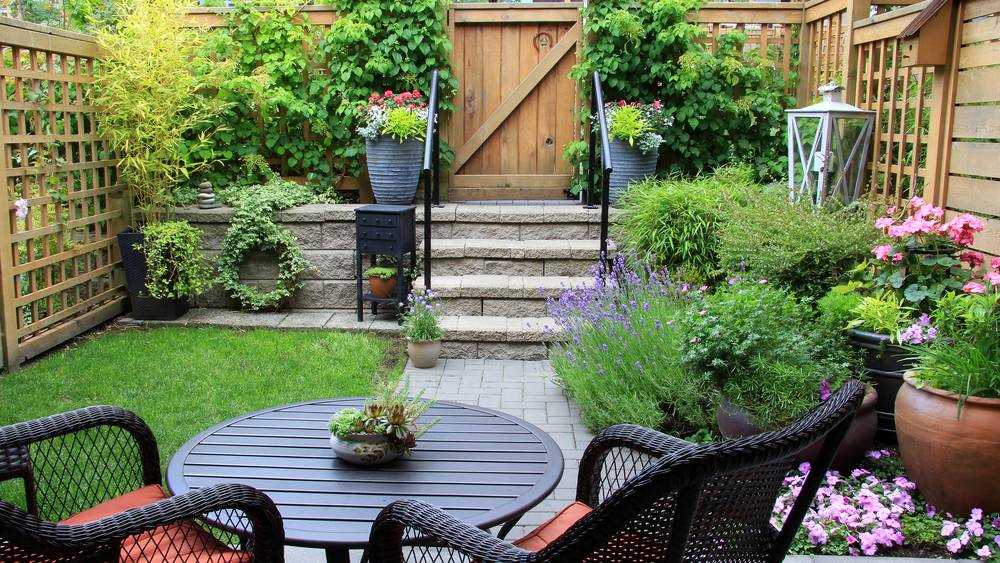For many people, their gardens are a hobby, family gathering place and oasis of relaxation. You don't need a huge plot of land: a small garden can be all of that! First you should ask yourself which criteria are important to you:
- Should the garden be child-friendly?
- Do you want beds?
- Do you need a relaxation area?
- Which plants and trees do you like?
- Should existing plants be included in the design?
- How care-intensive should your little garden with plants be?
When you have found the most important points for yourself, you should start planning your small garden. We have put together what you pay attention to and what you better avoid here!
Small garden: the dos of design
1. Plan the outline
Before you start gardening, you should think about the structure. It is important to create a clear and simple structure and to divide your garden sensibly. As a central point z. B. suitable for a terrace, you can also plan vegetable beds or a relaxation area.
2. Set up the room divider
The divided areas should all harmonize with each other, but be optically separated from each other. Recommended as a room divider. B. Discounts, shrubs, trellis or trellis. Due to the restricted view, the garden ultimately appears larger, since it cannot be completely overlooked.
3. Select trees and plants specifically
Large trees provide a lot of shade, but also make the garden appear very cramped. Instead, you should slender shrubs and trees plants, like a copper rock pear or a ball acacia. And: plant darker, large-leaved plants to the front and low and small-leaved plants to the rear, this creates depth.
4. Choose a few colors
If you choose many different colors for your small garden, it will quickly appear restless and overloaded. It makes more sense to choose a small range of colors while doing so cool and light tones (e.g. white, pink and blue). These colors are also perceived well from a distance and give the garden more spaciousness. Light tones also open dark corners!
5. Create depth with heights
You create depth through different heights in the garden. These can be symmetrically arranged raised beds, a raised wooden terrace or half-high walls.
6. Water brings brightness
Also one The area of water visually enlarges a small garden. It doesn't have to be a huge pond that takes up half the space. A beautiful spring stone, a galvanized garden tub or a pretty standing fountain also serve their purpose.
7. Accent
With a skillful accent you create an eye-catcher in the garden. This Fixed points create depth again – this can be chic garden furniture, but also a mini greenhouse or a beautiful hot stone (see point 6).
Small garden: the don'ts in the small green
8. Plant too densely
It is not only the colors that should be carefully selected. If a small garden is overgrown, it will see quickly overloaded and restless out. Z is more beautiful. Legs circular or oval lawn areathat is framed by shrubs.
9. Set high walls
Privacy in your own garden must be natural, but not at the expense of the feel-good factor. High walls, hedges or privacy walls quickly narrow a small garden. Use half-height privacy screens and pay attention to light materials such as B. with untreated wooden fences.
10. Arrange garden path improperly
You should only consider a sidewalk when it is really necessary. If you cannot or do not want to do without the path, then it should run towards a destination, such as a small garden shed or a bench. Your garden is rather long and narrow, the garden looks light curved sidewalk wider. Is the garden rather small and square, you lay the garden path diagonal running through the garden.
For the final touch, you can also make decorations for the garden or make your own signs for your beds or a bird bath, browse our article Pottery: Ideas for homemade ceramics. And: DIY furniture is still popular!
